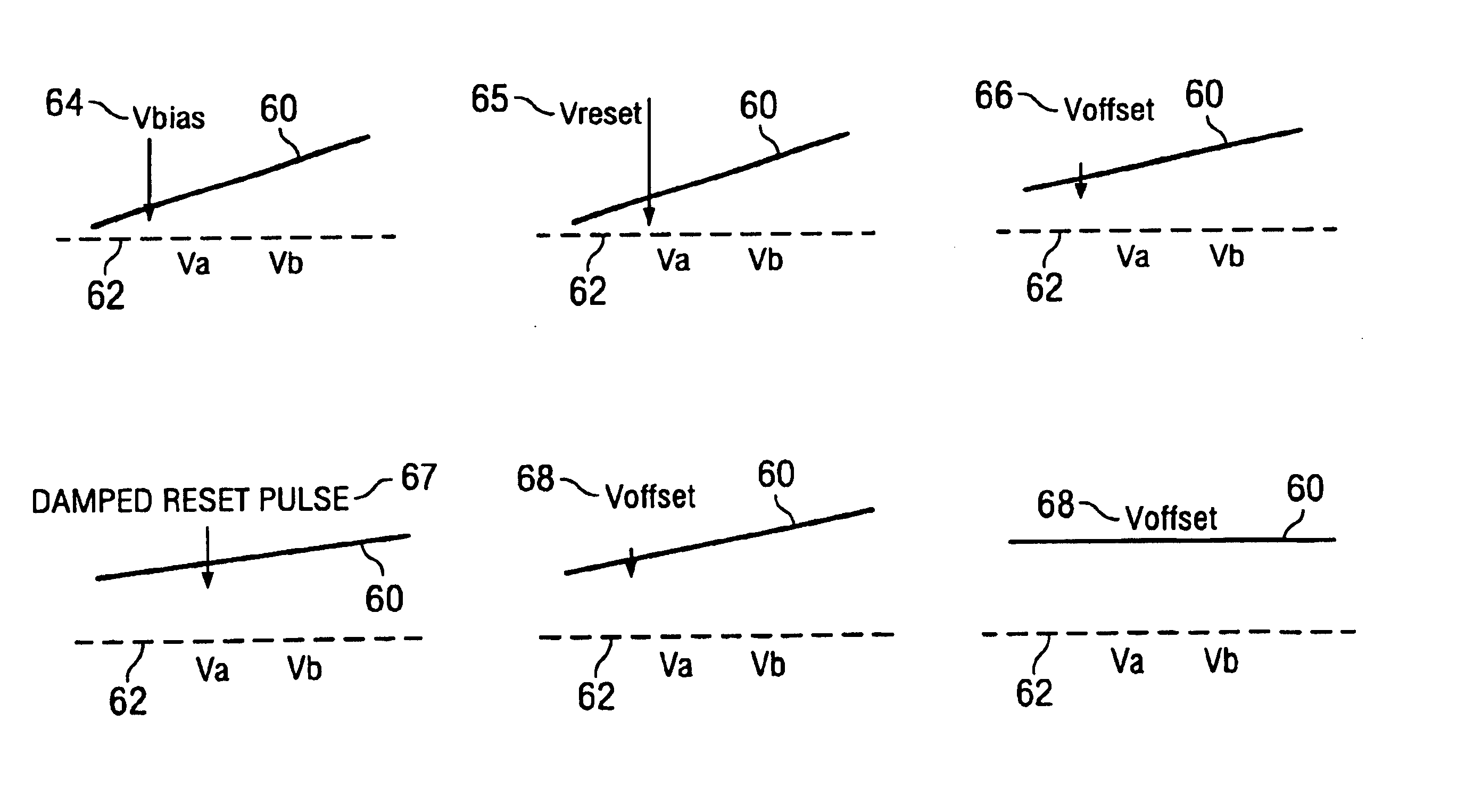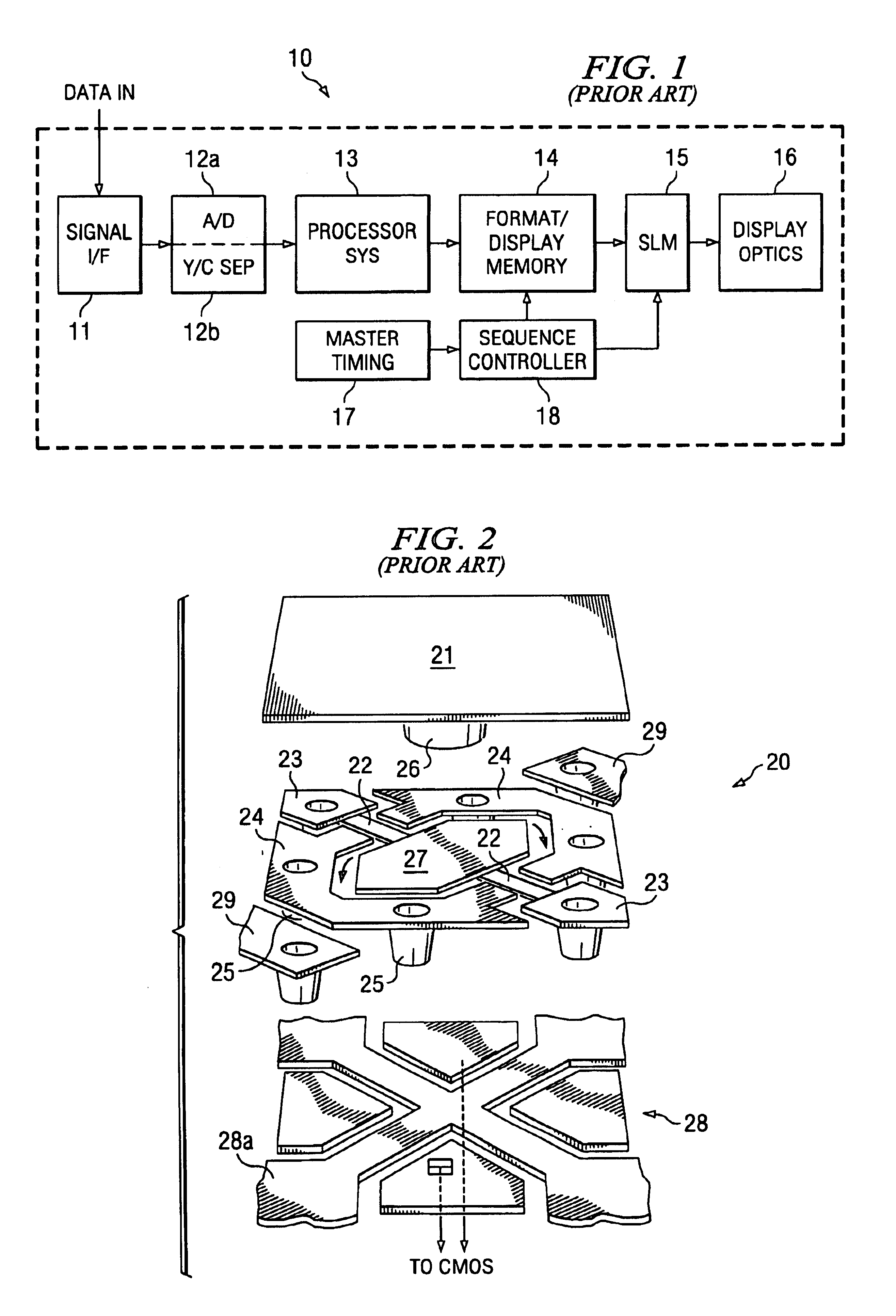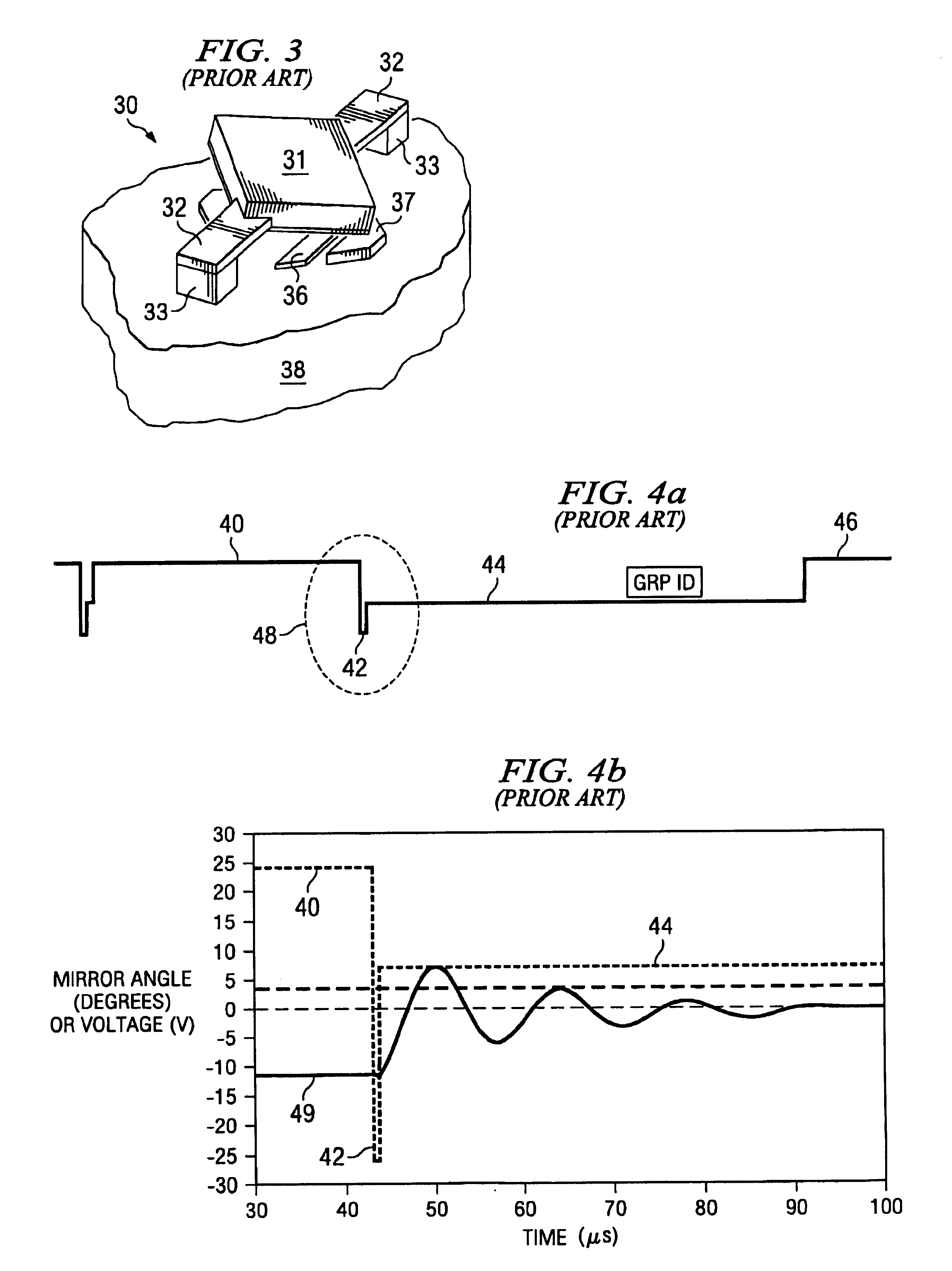Damped control of a micromechanical device
a micromechanical device and control technology, applied in the field of micromechanical devices, can solve the problems of introducing a significant contrast loss, affecting the performance of the device, so as to reduce the undesirable mechanical transient response, reduce overshoot and oscillation, and reduce the transient resonance of the dmd mirror
- Summary
- Abstract
- Description
- Claims
- Application Information
AI Technical Summary
Benefits of technology
Problems solved by technology
Method used
Image
Examples
Embodiment Construction
[0037]The making and using of the presently preferred embodiments are discussed in detail below. It should be appreciated, however, that the present invention provides many applicable inventive concepts that can be embodied in a wide variety of specific contexts. The specific embodiments discussed are merely illustrative of specific ways to make and use the invention, and do not limit the scope of the invention.
[0038]The present invention will be described with respect to preferred embodiments in a specific context, namely a DMD with a damped reset and release. The invention may also be applied, however, to other types of spatial light modulators, to other micro-electromechanical system (“MEMS”) devices having movable elements that move in response to electrostatic attraction, or to other MEMS devices utilizing transient control of movable elements.
[0039]One application of DMDs is for forming images where the DMD has an array of deflectable mirrors that selectively reflect light to ...
PUM
 Login to View More
Login to View More Abstract
Description
Claims
Application Information
 Login to View More
Login to View More - R&D
- Intellectual Property
- Life Sciences
- Materials
- Tech Scout
- Unparalleled Data Quality
- Higher Quality Content
- 60% Fewer Hallucinations
Browse by: Latest US Patents, China's latest patents, Technical Efficacy Thesaurus, Application Domain, Technology Topic, Popular Technical Reports.
© 2025 PatSnap. All rights reserved.Legal|Privacy policy|Modern Slavery Act Transparency Statement|Sitemap|About US| Contact US: help@patsnap.com



